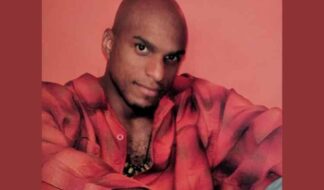by Gwendolyn Ann Smith

Transmissions
"Use the pronoun preferred by the individuals who have acquired the physical characteristics (by hormone therapy, body modification, or surgery) of the opposite sex and present themselves in a way that does not correspond with their sex at birth. If that preference is not expressed, use the pronoun consistent with the way the individuals live publicly."
This is what the advice the Associated Press Stylebook has, for many years now, given to journalists covering transgender people. It's not perfect, leading to many poorly written pieces where the writer shifts between "he" and "she" when trying to write a piece about a person before and after transition. It also focuses heavily on the medical transition, though does step back in the last sentence.
Yet the media as a whole routinely ignores even this. For example, when the body of Cemia "Ci Ci" Acoff was discovered in Olmstead Township, Ohio this April, the Cleveland Plain Dealer referred to her using her birth name and pronouns, declaring her an "oddly dressed man" in their coverage.
Activists swarmed in to respond to the Plain Dealer's reporting, causing the paper to publish a somewhat lukewarm response editorial and re-edit stories with references to Acoff's gender – while maintaining her birth name in both these stories and the editorial.
The editorial in question by Plain Dealer reader representative Ted Diadiun, quotes the AP stylebook, but also notes that neither the original article's writer nor his editors were aware of these guidelines when the story went out.
The paper also cites that much of the information its field reporter, John Caniglia, cited was given by the local police. This is where the paper got the name and a pronoun.
"Mistakes were made here," says Diadiun, "but none was made out of malevolence or an intent to injure."
The frustrating thing about this from my perspective, and why so many transgender people and our allies spoke out about the treatment of Acoff by the Plain Dealer is simple. This is a mistake that is made with regularity.
Nearly every time a news agency covers the story of a transgender person, living or not, we go through this same cycle: the paper misgenders, uses a birth name, and otherwise paints a lurid picture of the transperson in question. Then others complain about the coverage – and after some back and forth the paper apologizes and attempts to make good.
Some of the time this really can be an honest error: when a story is fresh, there may just not be a lot of information to go on, and they end up relying on police or others who may not know all the details of a person's life. Writers and editors are human, stuff happens, and they do make mistakes.
There's more to this, though. The AP guidelines I quoted above? I copied those from my old edition of the Associated Press Stylebook, copyright 2004. These guidelines are nothing new. And even without the AP Stylebook, there are plenty of other resources out there to give a reporter a sense of how to appropriately cover a story.
Or, of course, one could simply ask a transgender person or those close to them.
I started using the name above this column two decades ago. It's been my legal name for about as long. This is the name my lover calls me, the name my family puts on the holiday cards, the name my friends address me with.
I had a name before that, and while I don't take any pains to hide it, I also opt to not share it. By the same token, I also would not opt to use a childhood nickname. There are plenty out there that know my old name, but they also have the good sense to know that it's a part of the past. To be honest, half the time I hear that old name, I forget it was once mine.
Yet I know from experience that when the media interviews me, one of the first questions asked will be about this old name of mine. They're always shocked when I decline to answer – but I know that if I do give it, they will "hang" the entire story around a first paragraph about my old name, and the story of a "boy who wanted to be a girl." Such a narrative doesn't speak truth: it tells you nothing about who I truly was, and how much I had to do to be the woman I am.
Consider this non-transgender example: You may have heard of Marion Morrison, but the name tells you nothing of the American icon that is John Wayne. You can argue that they are indeed the same person, but only one of those names is the person he was.
Perhaps this is the key: names have power, especially those we choose for ourselves. My name is a big part of who I am, and the person I have chosen to be. To devalue me by using a name I long since discarded is to say – at the very least – that you do not trust who I am. Quite simple, you are saying that my core identity is a falsehood when I know so much better.
When you refer to Cemia Acoff by her birth name – and so many others – you do the same. Whether intentionally or otherwise, you make a statement that she isn't even trustworthy enough to choose her own name. To go a step further, to make an unspoken claim that you know who she is better than even she knew.
This is disrespect, this is devaluing, and this is wrong.










